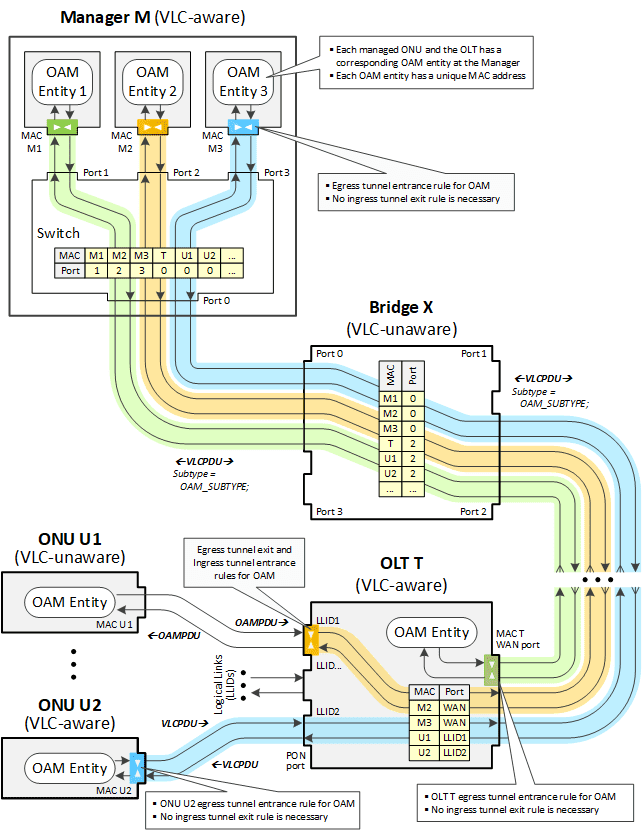Many, if not most, of the tasks we do as we go through our personal and business life each day require connectivity — everything from checking the weather or getting directions to giving a video presentation to a client or sending a contract for an e-signature to close a major sale at work. We can only perform these tasks without interruption or frustration if we have reliable and seamless connectivity.
However, network operators can only provide the level of service needed for today’s volume of digital use if they know what is happening on the network in real-time.
A network management system, which includes various processes and protocols, serves as the eyes and ears of network operators. Because operators cannot physically observe equipment distributed geographically, or even at a business down the street, network management provides second-by-second information on the health of the network.
With that information, the operator knows when packets are dropping, a video is excessively delayed, or a voice call is interrupted. Only after the operator knows about the issues can they begin to fix the problem. Most often technicians monitoring the network are able to resolve the issues remotely, again by utilizing various configuration and provisioning capabilities of their network management systems.
Extending Network Management Capabilities Through Standardization
One of the most widely used protocols for network management is Operations, Administration, and Maintenance (OAM) protocol, standardized by the IEEE 802.3™ Standard for Ethernet.
This protocol is employed to manage various switches in data centers or switches and bridges connected into local area networks in various enterprises. Anywhere Ethernet is used, the OAM protocol is used as well. The IEEE 1904.1 Standards for Service Interoperability in Ethernet Passive Optical Networks further extended the OAM protocol to manage access networks, the so-called ‘last mile’ that connects cable/fiber modems and home gateways at customer premises to the aggregation devices in headends or central offices.
But there is an inherent limitation of the OAM protocol – the protocol is link based, which means only two devices immediately connected to each other can “talk OAM” to each other, so management of a device that is beyond an intermediate hop is not possible, or requires proprietary modifications at every intermediate device to forward the OAM messages through.
Think of this as travelling by train from point A to a faraway point B, where at every station along the way, the traveler needs to disembark the train, find the ticket booth, purchase a ticket for the next leg, wait for the next train, and so on. While feasible, this is difficult and time consuming.
For network operators, this complexity of getting from point A to point B often translated into lost revenue and increased downtime for the end user.
To overcome these challenges, the IEEE Standards Association (IEEE SA) approved the IEEE 1904.2™ Standard for Control and Management of Virtual Links in Ethernet-based Subscriber Access Networks to provide a mechanism for devices to use virtual links between the management station and the managed devices. Using the previous analogy, a virtual link serves as the express train between the starting point A and the destination point B. There are no intermediate stops and no need to change trains. The OAM protocol now sees every managed device being only a single hop away!
With the help of the IEEE 1904.2 standard, network operators can now use the familiar and ubiquitous Ethernet OAM protocol to monitor the status and health of remote devices on a network and to take remedial actions when needed, all from a single location.

The OAM is not the only management protocol used by network operators. Some access networks rely on ONU Management and Control Interface (OMCI) protocol defined by ITU-T. While, normally, OMCI messages can only be exchanged between the two neighboring devices, the OLT in the central office, and the ONU at the customer’s location, with the IEEE 1904.2 standard, the operator will be able to consolidate all the management functions in one location and direct the OMCI messages via specific tunnels to their exact destinations.
The IEEE 1904.2 standard also supports organization-specific extensions, such that a vendor or an operator may use it for their own purpose-built protocols and technologies.
The virtual links or tunnels enabled by the IEEE 1904.2 standard are not limited to management applications. But solving the remote management problem is probably the most impactful area at this time. For that reason, the standard developers ensured that the IEEE 1904.2 specification is especially optimized for the OAM management traffic. The OAM messages can be tunneled from source to destination with zero(!) overhead – the message size remains the same and no extra network bandwidth is consumed by the tunneling.
Another key advantage of the new standard is that only the source and destination devices need to comply with the IEEE 1904.2 specification. Any intermediate Ethernet devices operate as always and don’t even need to be aware of the IEEE 1904.2 specification.
Creating an Interoperable Network for Connected Devices
IEEE 1904.2 enables remote management of millions of geographically-dispersed devices. While the standard does not deal with the actual mechanisms or protocols used to manage remote devices, it describes how to transmit the messages between the management station and any of the managed devices across large layer-2 networks.
As organizations begin using the IEEE 1904.2 standard to create compliant virtual links, the industry will realize the following benefits from centralized management:
- Reliability: Ability to extend the network management domain to remote devices in the network improves network operator’s ability to quickly detect, diagnose, and correct the issues related to network performance.
- Interoperability: Before the creation of the standard, network operators were not able to communicate with remote devices without vendors providing proprietary mechanisms to forward and relay management messages through various intermediate devices. These mechanisms provided by different vendors were not interoperable and this significantly complicated network deployments. IEEE 1904.2 creates an open environment where operators can seamlessly integrate products from different vendors on the same network.
- Lower Costs: Because consolidating the management facilities (technical personnel, monitoring and diagnostic equipment, etc.) in a single location is significantly easier than having to replicate it in multiple locations close to managed devices, the costs are lower for the network operator and, ultimately, the end user.
- Innovation: The IEEE 1904.2 standard allows vendors and operators to use virtual links to facilitate new proprietary protocols or new applications.
As more devices — both in types and volume — become connected, the challenges associated with management are only going to become more critical. Without being able to effectively and affordably manage all devices on a network, operators cannot provide the reliable and fast service required for today’s world.
Through IEEE 1904.2, network operators can begin to build the infrastructure and framework that helps to affordably provide connectivity both today and tomorrow.
Authors:
- Glen Kramer, Broadcom, Distinguished Engineer, Optical Access System Architect, Chair of IEEE 1904 Access Networks Working Group
- Kevin Noll, Vecima, Principal Access Architect, Vice Chair of IEEE 1904 Access Networks Working Group and Chair of 1904.2 Task Force
- Marek Hajduczenia, Charter Communications, Network Architect, Distinguished Engineer, IEEE 1904 Working Group Chief Editor
- Curtis Knittle, CableLabs, VP of Wireline Technologies, 1904.2 Task Force Volunteer
- Jean-Christophe (Jc) Marion, TiBiT Communications, Software Director, 1904.2 Task Force Volunteer
- Mark Laubach, Self, Member of IEEE 1904.2 ballot group
- Ryan Tucker, Charter Communications, Principal Engineer, IEEE 1904 Working Group Volunteer








